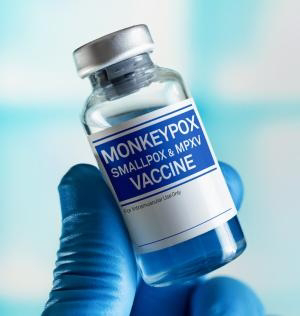Introduction :
Monkeypox is a rare disease caused by infection with the monkeypox virus. Monkeypox virus is part of the same family of viruses as variola virus, the virus that causes smallpox. Monkeypox symptoms are similar to smallpox symptoms, but milder, and monkeypox is rarely fatal. Monkeypox is not related to chickenpox.
🔎Case of monkey pox :
As of late July 2022, the CDC had confirmed almost 2,900 cases of monkeypox and a related virus in the U.S. That was up from 35 confirmed cases in early June. The agency had confirmed over 16,800 cases of monkeypox worldwide as of late July, up from over 1,000 cases reported to the World Health Organization (WHO) in early June.
On July 23, 2022, WHO Director-General Tedros Adhanom Ghebreyesus declared the fast-spreading outbreak to be “a public health emergency of international concern.”
🔎Monkey pox cases in India :
The 2022 monkeypox outbreak in India is a part of the ongoing outbreak of human monkeypox caused by the West African clade of the monkeypox virus. The outbreak was first reported in India on 14 July 2022 when Kerala's State Health Minister Veena George announced a suspected imported case which was confirmed hours later by the NIV. India was the tenth country to report a monkeypox case in Asia and the first in South Asia. Currently, India has reported ten confirmed cases of monkeypox, three of them in Kerala and five in Delhi, and eight suspected cases, one case each in Delhi and Telangana, two in Bihar and four in Uttar Pradesh.
🔎How Can Monkeypox Spread?
🧿 It can spread from person to person through close contact. Someone who's infected with it can pass it to you through:
🧿 Contact with body fluids like blood or semen
🧿 Contact with monkeypox lesions on their skin (including inside their nose and mouth)
🧿 Respiratory droplets that you breathe in
🧿 Things that have touched infected body fluids, like bedding or clothing (This happens less often.)
🔎Natural host of monkeypox virus:
Various animal species have been identified as susceptible to monkeypox virus. This includes rope squirrels, tree squirrels, Gambian pouched rats, dormice, non-human primates and other species. Uncertainty remains on the natural history of monkeypox virus and further studies are needed to identify the exact reservoir(s) and how virus circulation is maintained in nature.
🔎Monkeypox symptoms
People with monkeypox get a rash that may be located on or near the genitals (penis, testicles, labia, and vagina) or anus (butthole) and could be on other areas like the hands, feet, chest, face, or mouth.
The rash will go through several stages, including scabs, before healing.
The rash can initially look like pimples or blisters and may be painful or itchy.
🔎Other symptoms of monkeypox can include:
🧿 Fever
🧿 Chills
🧿 Swollen lymph nodes
🧿 Exhaustion
🧿 Muscle aches and backache
🧿 Headache
🧿 Respiratory symptoms (e.g. sore throat, nasal congestion, or cough)
🔎You may experience all or only a few symptoms
🧿 Sometimes, people have flu-like symptoms before the rash.
🧿 Some people get a rash first, followed by other symptoms.
🧿 Others only experience a rash.
🔎What is the treatment for monkeypox?
There is no specific treatment approved for monkeypox. Health care providers may treat monkeypox with some antiviral drugs used to treat smallpox, such as tecovirimat (TPOXX) or brincidofovir (Tembexa). For those unlikely to respond to the vaccine, care providers may offer vaccinia immune globulin, which has antibodies from people who have been given the smallpox vaccine.
🔎How do you prevent monkeypox virus?
A smallpox vaccine provides protection against monkeypox, but its use is currently limited to clinical trials. Prevention depends on decreasing human contact with infected animals and limiting person-to-person spread. The best way to help prevent the spread of monkeypox virus is to:
🧿 Avoid contact with infected animals (especially sick or dead animals).
🧿 Avoid contact with bedding and other materials contaminated with the virus.
🧿 Thoroughly cook all foods that contain animal meat or parts.
🧿 Wash your hands frequently with soap and water.
🧿 Avoid contact with people who may be infected with the virus.
🧿 Practice safe sex, including the use of condoms and dental dams.
🧿 Wear a mask that covers your mouth and nose when around others.
🧿 Clean and disinfect frequently touched surfaces.
🧿 Use personal protective equipment (PPE) when caring for people infected with the virus







Comments